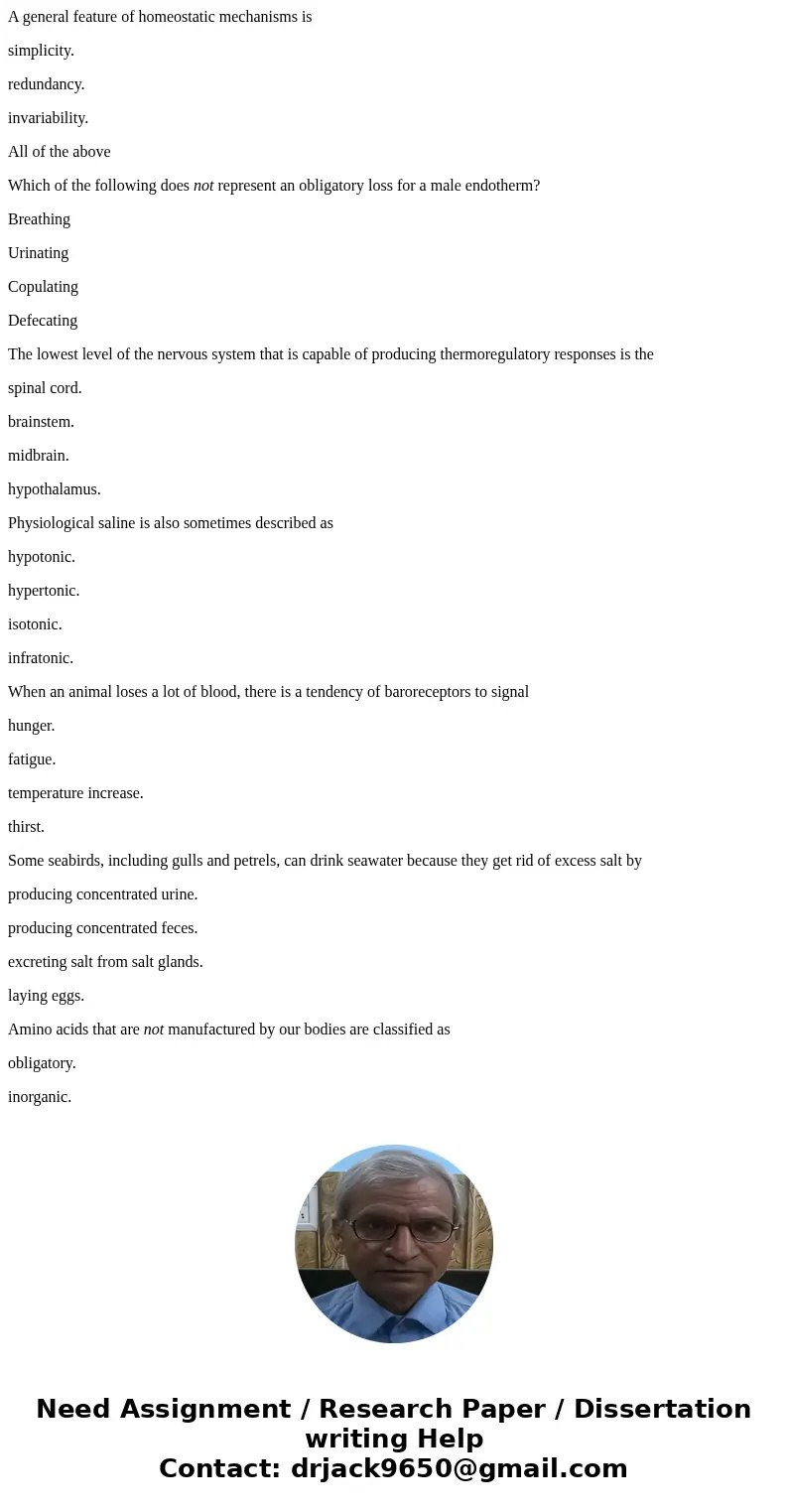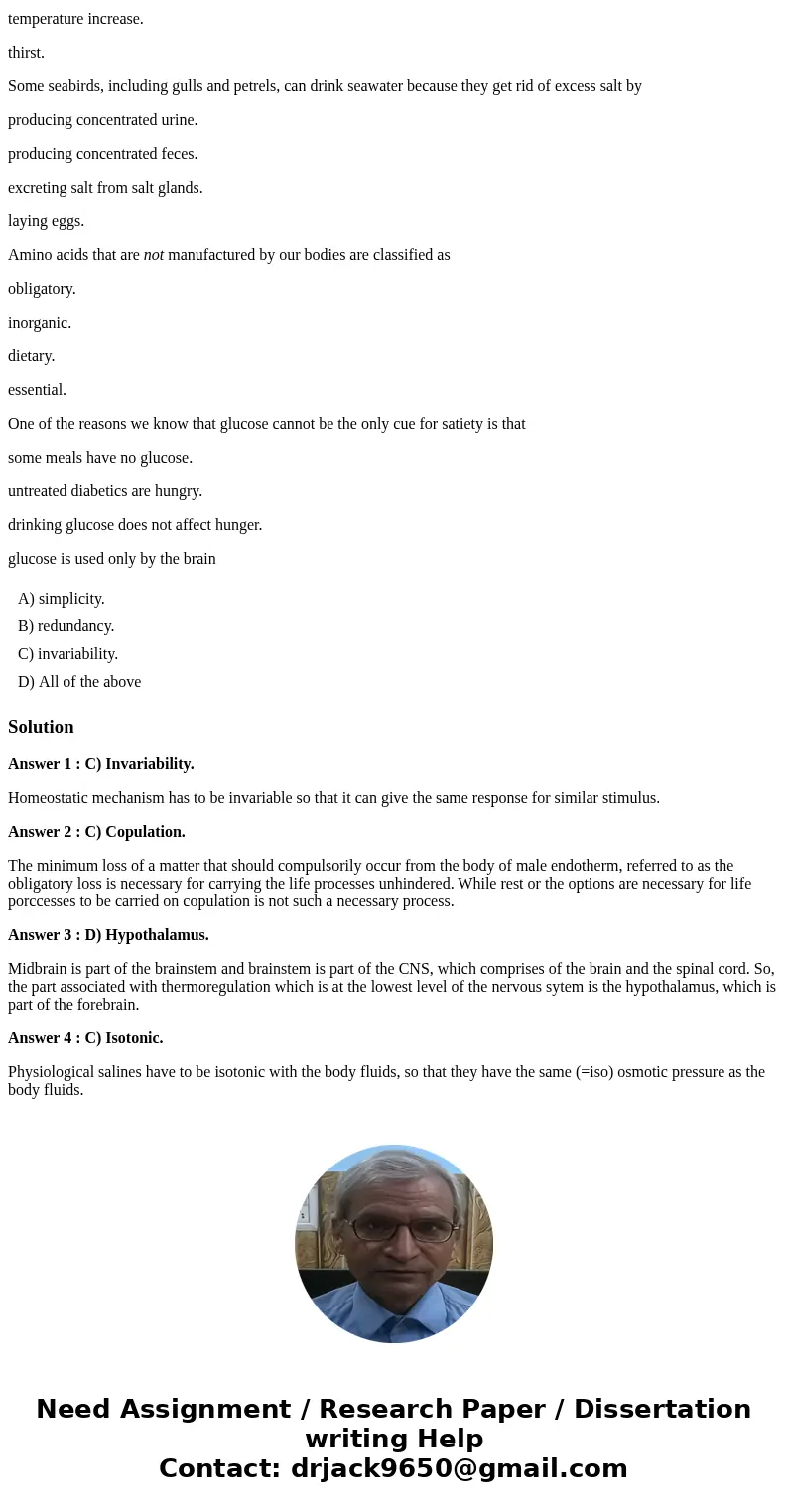A general feature of homeostatic mechanisms is simplicity re
A general feature of homeostatic mechanisms is
simplicity.
redundancy.
invariability.
All of the above
Which of the following does not represent an obligatory loss for a male endotherm?
Breathing
Urinating
Copulating
Defecating
The lowest level of the nervous system that is capable of producing thermoregulatory responses is the
spinal cord.
brainstem.
midbrain.
hypothalamus.
Physiological saline is also sometimes described as
hypotonic.
hypertonic.
isotonic.
infratonic.
When an animal loses a lot of blood, there is a tendency of baroreceptors to signal
hunger.
fatigue.
temperature increase.
thirst.
Some seabirds, including gulls and petrels, can drink seawater because they get rid of excess salt by
producing concentrated urine.
producing concentrated feces.
excreting salt from salt glands.
laying eggs.
Amino acids that are not manufactured by our bodies are classified as
obligatory.
inorganic.
dietary.
essential.
One of the reasons we know that glucose cannot be the only cue for satiety is that
some meals have no glucose.
untreated diabetics are hungry.
drinking glucose does not affect hunger.
glucose is used only by the brain
| |||
| |||
| |||
|
Solution
Answer 1 : C) Invariability.
Homeostatic mechanism has to be invariable so that it can give the same response for similar stimulus.
Answer 2 : C) Copulation.
The minimum loss of a matter that should compulsorily occur from the body of male endotherm, referred to as the obligatory loss is necessary for carrying the life processes unhindered. While rest or the options are necessary for life porccesses to be carried on copulation is not such a necessary process.
Answer 3 : D) Hypothalamus.
Midbrain is part of the brainstem and brainstem is part of the CNS, which comprises of the brain and the spinal cord. So, the part associated with thermoregulation which is at the lowest level of the nervous sytem is the hypothalamus, which is part of the forebrain.
Answer 4 : C) Isotonic.
Physiological salines have to be isotonic with the body fluids, so that they have the same (=iso) osmotic pressure as the body fluids.


 Homework Sourse
Homework Sourse